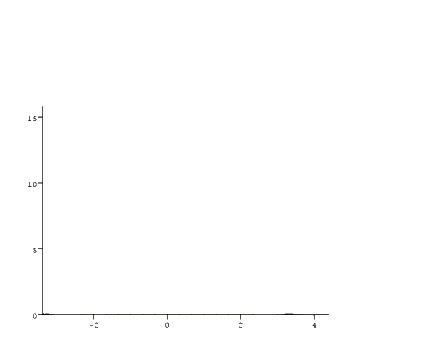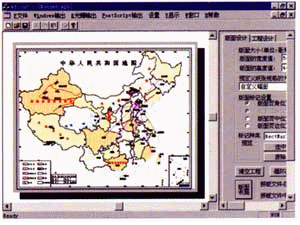 |
 |
| Picture 1 | Picture 2 |
 |
| ||
DonNTU
Master's
portal of DonNTU
||
DonNTU
Master's
portal of DonNTU

IntroductionThe relevance of the topic: There are different types of solid fuel materials, which can be arranged in a ranked series, ordered by their degree of metamorphism and coalification of plant material. Different ranks are: peat (lowest rank), oil shale, lignite, bituminous coal, anthracite (highest rank). The main qualitative characteristics of the coals are ash content, sulfur content, moisture and volatile substances. Their value determines the commercial value of any type of combustible material. One of the most valuable types of coal is coking coal. They are of great importance in the metallurgical and coke production. At present, many countries are experiencing an acute shortage of this raw material. Researches in the development of these materials are very important. Ukraine has a sufficient amount of coking coal in the Donbass region. A similar type of coal in the coal basin is represented in Lafia-Obi area in Nigeria. It is the main area for the extraction of coking coal in Nigeria. A study to compare and determine the quality of coking coal of the two regions is therefore relevant.[1] Purpose: The study aims to assess the quality and economic value of coal seam m3 Makeyevka-Donetsk region in Ukraine, and coal deposits of Lafia-Obi in Nigeria. Object of study: Coal seam m3 in Donetsk- Makeyevka region, Donbass and coal deposits of Lafia-Obi in Nigeria. Subject of research: Comparative characteristics of the quality of coal seam m3 Donetsk - Makeyevka region, Donbass and coal deposits of Lafia-Obi in Nigeria. Research objectives:
Research methods:
The scientific value of the work: Definition of the geological factors that contributed to the differences in coal quality in the study areas. Basic partThe geological structure of areas of study: The Benue Trough of Nigeria is a rift basin in West Africa that extends NNE-SSW for about 800 km in length and 50km in width. The southern limit is the northern boundary of the Niger Delta, while the northern limit is the southern boundary of the Chad Basin. The trough contains up to 6,000 m of Cretaceous-Tertiary sediments of which those predating the mid-Santonian have been compressionally folded, faulted, and uplifted in several places. Compressional folding during the mid-Santonian tectonic episode affected the whole of the Benue Trough and was quite intense, producing over 100 anticlines and synclines (Benkhelil, 1989).[4] Major such deformational structures include the Abakaliki anticlinorium and the Afikpo syncline in the Lower Benue, the Giza anticline and the Obi syncline in the Middle Benue, the Lamurde anticline and the Dadiya syncline in the Upper Benue Trough. Following mid-Santonian tectonism and magmatism, depositional axis in the Benue Trough was displaced westward resulting in the subsidence of the Anambra Basin. The Anambra Basin, therefore, is a part of the Lower Benue Trough containing post-deformational sediments of Campanian-Maastrichtian to Eocene ages.[5] The Benue Trough is arbitrarily subdivided into a lower, middle and upper portion. No concrete line of subdivision can be drawn to demarcate the different portions, but major localities (towns/settlements) that constitute the depocentres of the different portions have been well documented. The depocentres of the Lower Benue Trough comprise mainly the areas around Nkalagu and Abakaliki, while those of the Anambra Basin centre around Enugu, Awka and Okigwe. The Middle Benue Trough comprises the areas from Markurdi through Yandev, Lafia, Obi, Jangwa to Wukari. In the Upper Benue Trough, the depocenters comprise Pindiga, Gombe, Nafada, Ashaka (in the Gongola Arm) and Bambam, Tula, Jessu, Lakun, and Numan in the Yola Arm. The geological structure of the Middle Benue Trough will be explained further as it is the region where the study area (Lafia-Obi) falls within. The geological structure of the Donetsk-Makeevka area participate deposits of middle and upper Carbonaceous, almost everywhere overlain by Quaternary and partly Palaeogenes deposits. In the extreme western part of the eroded surface of Carboniferous rocks overlain by Jurassic and Cretaceous age.[6] Lower Carboniferous deposits are distributed outside the Donetsk-Makeevka area and their outputs are bordered area on its southern edge. Middle Carboniferous deposits that lie conformably on the Lower Carboniferous rocks have the following characteristics:
Suite C27 is an independent object exploration area, where the main reservoir m3 occurs at depths exceeding 1,000 m with a very gentle slope of rocks. These areas belong to the type A-2 or B-2. Suite C27 consists up to 22-24 coal seams, of which eight operating depth reaches the entire area of the district or its individual parts. The main strata suites: m2, m3, m5. Formation sediments have been thoroughly explored in the district, the highest coal-bearing confined to western and central parts.[8] Layer m3 has a stable operating depth in the entire area of the district. It developed a continuous front of mining operations, a length of about 60 km. Its thickness is 1.0-1.2 m in the central part of the region, it increases from 1.3 m to 2.0 m, and the layer has an operational depth of exploration in the region area to a depth of 1200-1400 m.[9] The method of analysis of materials and results: The main criteria for determining the effective use of coal for various purposes are its markers; ash content, sulfur content, volatile substances. The vast majority of the parameters of coal quality specifications are defined by technical analysis.[10] To obtain the statistical characteristics of the quality of coal, a statistical package, SPSS (Picture 2), is used. Data for comparing the quality of the coal seam m3 in the Donetsk-Makeevka mining and industrial region of Donbass. The final result will give the statistical characteristics of the quality of coal: sulfur content, ash content, moisture content of the coal seam m3.[11] Coking coal is determined by the thickness of plastic layer (coking). The results obtained from laboratory analysis of technical samples to determine the qualitative characteristics of the coal seam m3. They will be compared with the Lafia-Obi coals that have been identified by some researchers in Nigeria. Differences in quality characteristics will show which of them has a greater commercial value. |
At the moment of writing of this abstract thesis has not yet been completed. It’s final completion will take place on December, 1, 2012. Text and materials of the thesis can be received from an author or his scientific adviser after this date.